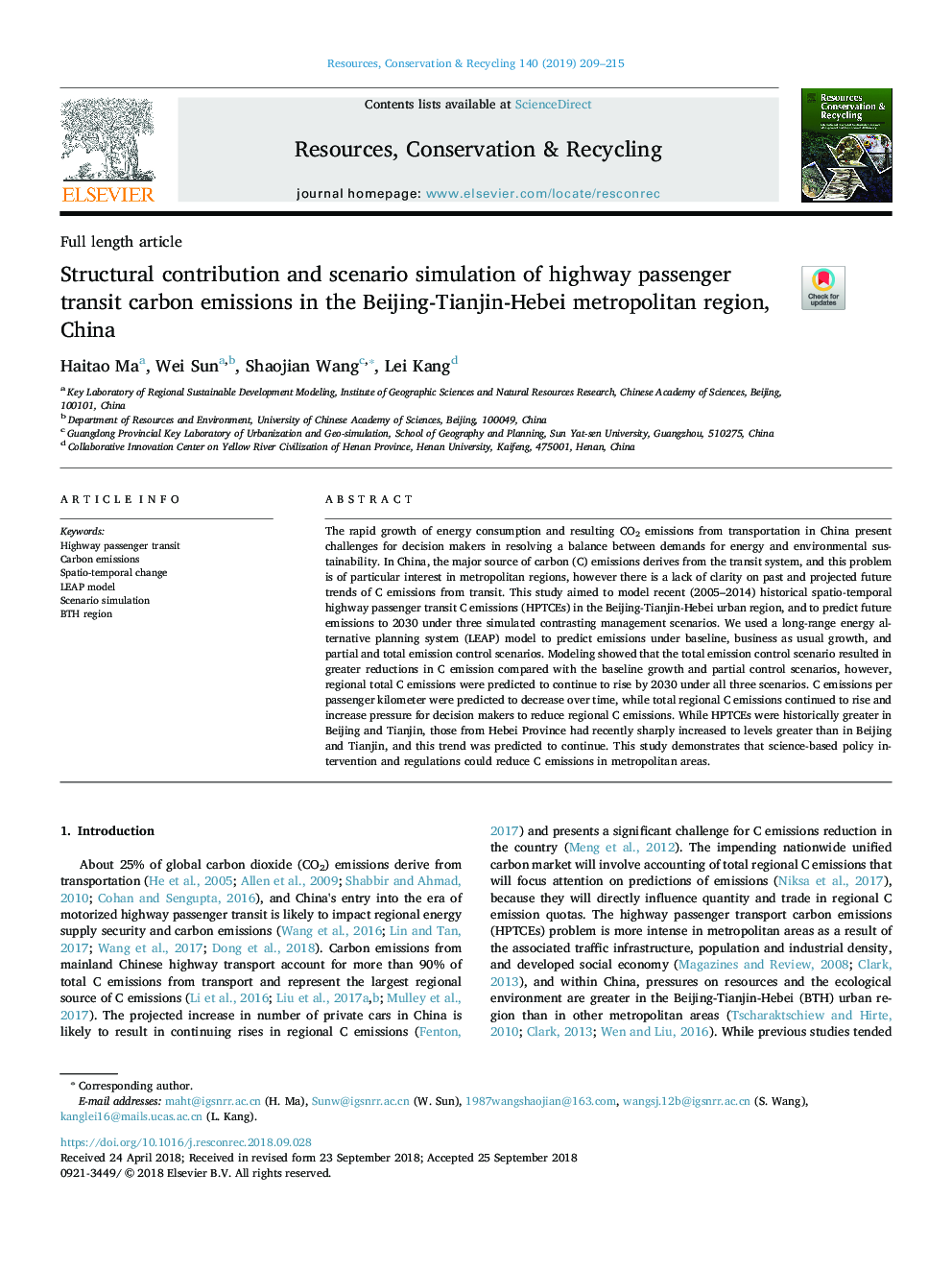| Article ID | Journal | Published Year | Pages | File Type |
|---|---|---|---|---|
| 11027506 | Resources, Conservation and Recycling | 2019 | 7 Pages |
Abstract
The rapid growth of energy consumption and resulting CO2 emissions from transportation in China present challenges for decision makers in resolving a balance between demands for energy and environmental sustainability. In China, the major source of carbon (C) emissions derives from the transit system, and this problem is of particular interest in metropolitan regions, however there is a lack of clarity on past and projected future trends of C emissions from transit. This study aimed to model recent (2005-2014) historical spatio-temporal highway passenger transit C emissions (HPTCEs) in the Beijing-Tianjin-Hebei urban region, and to predict future emissions to 2030 under three simulated contrasting management scenarios. We used a long-range energy alternative planning system (LEAP) model to predict emissions under baseline, business as usual growth, and partial and total emission control scenarios. Modeling showed that the total emission control scenario resulted in greater reductions in C emission compared with the baseline growth and partial control scenarios, however, regional total C emissions were predicted to continue to rise by 2030 under all three scenarios. C emissions per passenger kilometer were predicted to decrease over time, while total regional C emissions continued to rise and increase pressure for decision makers to reduce regional C emissions. While HPTCEs were historically greater in Beijing and Tianjin, those from Hebei Province had recently sharply increased to levels greater than in Beijing and Tianjin, and this trend was predicted to continue. This study demonstrates that science-based policy intervention and regulations could reduce C emissions in metropolitan areas.
Related Topics
Physical Sciences and Engineering
Energy
Renewable Energy, Sustainability and the Environment
Authors
Haitao Ma, Wei Sun, Shaojian Wang, Lei Kang,
